Learning Microsoft Excel 2008 (Mac)
by Greg Bowden (372 pages)
The Learning Microsoft Excel 2008 tutorials provide spreadsheet lessons to teach or learn Microsoft Excel 2008.
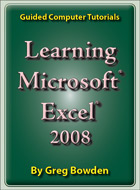 |
Module 1 introduces the Excel basics of entering labels, values and formulas, formatting cells and worksheets, copying cell data, creating charts and using the drawing tools.
Support files that provide all the images and data required to complete the activities are included with the product. |
Prices (Including GST)
Products can be purchased using a School Purchase Order Number, Credit Card or PayPal.
Learning Microsoft Excel 2008 Module 1 Single-user, $A11 |
|
Learning Microsoft Excel 2008 Module 2 Single-user, $A11 |
|
Learning Microsoft Excel 2008 Module 1 Multi-user, $A132 |
|
Learning Microsoft Excel 2008 Module 2 Multi-user, $A132 |
- Chapters and Sample Pages
- Chapter Descriptions
Module 1: Excel 2008 Basics
Contents (Modules 1 & 2) |
view pages (356k) |
Chapter 1: Introduction to Microsoft Excel (27 pages) |
|
Chapter 2: Formatting Cells (26 pages) |
view sample pages (1.07 MB) |
Chapter 3: Further Formatting (15 pages) |
|
Chapter 4: Copying Cell Data (22 pages) |
view sample pages (1.14 MB) |
Chapter 5: Larger Spreadsheets (18 pages) |
|
Chapter 6: Using Worksheets (17 pages) |
view sample pages (808k) |
Chapter 7: Displaying Data in Charts (16 pages) |
|
Chapter 8: More Detailed Charts (23 pages) |
|
Chapter 9: The Drawing Tools (24 pages) |
view sample pages (1.09 MB) |
Module 1 Project (Multi- user version only) |
|
Module 2: Excel 2008 Advanced Exercises
Chapter 10: Making Predictions with Excel (12 pages) |
|
Chapter 11: Making Decisions with Excel (21 pages) |
view sample pages (831k) |
Chapter 12: Lookup Commands (11 pages) |
|
Chapter 13: Creating Sales Invoices (30 pages) |
view sample pages (1.27 MB) |
Chapter 14: Sharing Data Between Files (24 pages) |
|
Chapter 15: Payroll Systems (20 pages) |
view sample pages (752k) |
Chapter 16: Financial Applications (18 pages) |
view sample pages (611k) |
Chapter 17: Date Calculations (13 pages) |
|
Chapter 18: Useful Tools (11 pages) |
|
Module 2 Project (Multi-user version only) |
|
The tutorials can be used onscreen next to the software package, from a tablet or printed. Assignments are provided at the end of each chapter and the multi-user version provides projects at the end of each module.
Module 1 Chapter Descriptions
Chapter 1: Introduction to Microsoft Excel
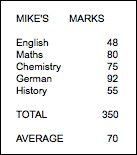
This chapter introduces:
-
the components of the Excel screen
-
moving around the spreadsheet
-
entering labels and values
-
entering formulas
-
saving and printing
Chapter 2: Formatting Cells
 This chapter introduces the
basics of formatting the content of cells: It includes:
This chapter introduces the
basics of formatting the content of cells: It includes:
-
formatting single cells and groups of cells
-
formatting values to currency and per cent
-
adjusting column widths and row heights
-
using the format cells dialogue bo.
-
approaches for creating spreadsheets
-
using borders
-
wrap text
Chapter
3: Further Formatting
This chapter demonstrates some more detailed cell formatting techniques, such as:
-
using the Format Painter tool
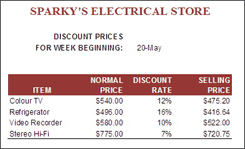
-
setting borders
-
drawing and erasing borders
-
border styles
-
setting cell shading
-
setting text colour
-
centring across selection
-
text wrapping within cells
-
printing formulas
Chapter
4: Copying Cell Data
 This chapter demonstrates
the many cell duplicating commands that Excel provides. It includes:
This chapter demonstrates
the many cell duplicating commands that Excel provides. It includes:
-
Fill Right, Fill Down and Fill Series
-
AutoFill and AutoFill options
-
Absolute and Relative references
-
the AutoSum command
-
application of the copy commands
Chapter
5: Rearranging Data
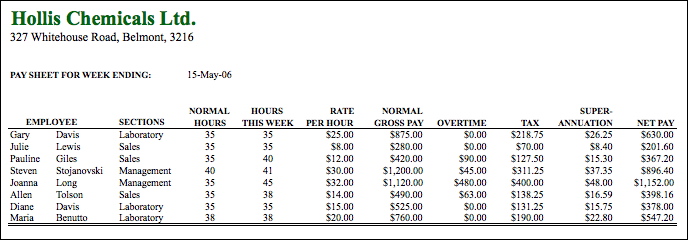
This chapter demonstrates how to manage larger spreadsheets and rearrange data within them. It includes:
-
inserting rows and columns
-
editing cells contents
-
sorting labels and values
Chapter 6: Using Worksheets
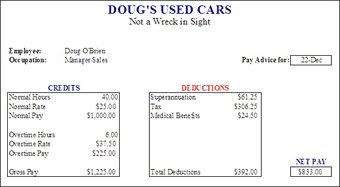 This chapter demonstrates
how to manage spreadsheet files using worksheets. It includes:
This chapter demonstrates
how to manage spreadsheet files using worksheets. It includes:
-
copying data between worksheets
-
duplicating a worksheet
-
moving worksheets
-
deleting worksheets
-
setting tab colours
-
creating worksheets for Equation Dumps
Chapter 7: Displaying Data in Charts
 This chapter introduces simple
chart creation techniques. It includes:
This chapter introduces simple
chart creation techniques. It includes:
-
setting the chart type
-
setting chart layouts
-
setting chart location
-
modifying charts
-
using the Chart tools
-
changing the chart type
-
exploding pie slices
-
printing charts
-
deleting charts
Chapter 8: More Detailed Charts
 This chapter demonstrates
the more detailed chart techniques, such as:
This chapter demonstrates
the more detailed chart techniques, such as:
-
plotting multiple column data
-
changing axis scales
-
formatting columns, axes and walls
-
plotting charting in their own worksheet
-
comparison charts
-
custom charts
Chapter 9: The Drawing Tools
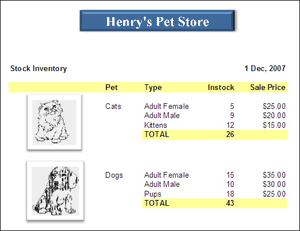
This chapter demonstrates some of the Drawing Tools that can be used to enhance a spreadsheet's appearance. It includes:
-
shading cells.
-
importing graphics and clip art.
-
using shape tools.
-
adding text to shapes.
-
setting graphics properties
-
using WordArt.
-
using fill effects
Module 1 Project
The multi-user version provides a project for students to apply their spreadsheet skills:. It involves creating a payroll for the EasyTune Car Care company.
Module 2 Chapter Descriptions
Chapter
10: Making Predictions With Excel
 This chapter
covers how to use formulas to predict outcomes. It involves:
This chapter
covers how to use formulas to predict outcomes. It involves:
-
predicting the income for a motel
-
using manual prediction methods
-
using the Goal Seek command
Chapter 11: Making Decisions With Excel
This chapter introduces the IF command which allows Excel to make decisions. It includes:

simple IF statements
-
using greater than, less than
-
using greater than or equal to
-
using AND and OR in IF statements
-
Conditional formatting
Chapter 12: Lookup Commands
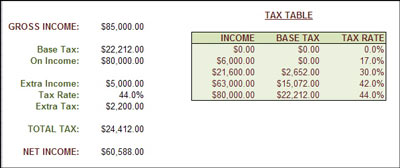 This chapter uses for the
Lookup command. It includes:
This chapter uses for the
Lookup command. It includes:
-
the structure of the Lookup command
-
looking up a interest rate table
-
creating an income tax calculation
-
calculating real estate commissions
Chapter 13: Creating Sales Invoices
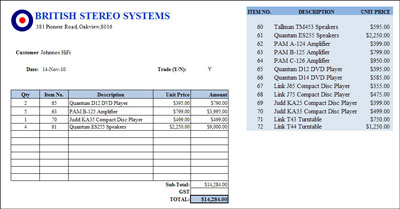 This
chapter combines the use of IF and Lookup commands to produce
sales invoices. It includes:
This
chapter combines the use of IF and Lookup commands to produce
sales invoices. It includes:
-
formatting the invoice
-
naming cells
-
looking up stock values from a table
-
using IF statements to ensure calculations are only carried out when values are entered
-
turning zero values off
-
creating a master invoice
-
setting print areas
Chapter
14: Sharing Data Between Files
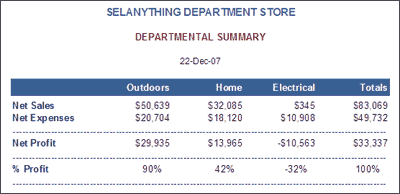
This chapter demonstrates how to link files so that it data is changed in one file other linked files are updated. It includes:
-
naming cells
-
linking an Office file to 3 Department file.
-
editing cells contents
-
looking at all 4 files at once
Chapter 15: Payroll Systems
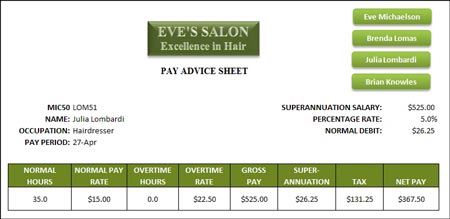 This chapter how to create
a payroll linked to payslips. It involves:
This chapter how to create
a payroll linked to payslips. It involves:
-
completing a payroll worksheet
-
linking a payslip worksheet to the payroll
-
using link formulas
-
setting macros and buttons to automate the payslips
Chapter 16: Financial Applications
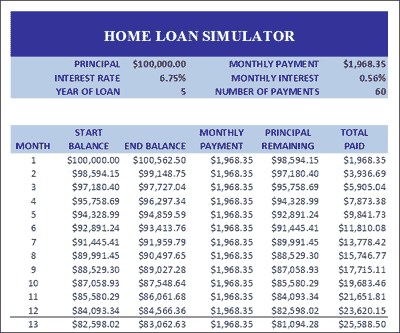 This
chapter demonstrates some examples of financial applications
that spreadsheets can be used for, such as:
This
chapter demonstrates some examples of financial applications
that spreadsheets can be used for, such as:
-
an electronic cheque book
-
a home loan simulator
-
compound interest calculations
Chapter 17: Date Calculations
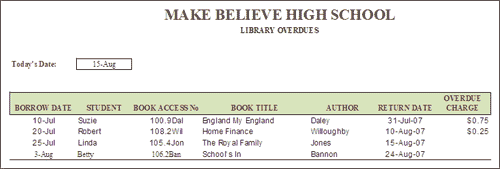 This chapter demonstrates
some of the some of the calculations that can done on date values.
It includes:
This chapter demonstrates
some of the some of the calculations that can done on date values.
It includes:
-
a library overdues system
-
extended IF formulas
-
a debt collection system
Chapter 18: Useful Tools
This chapter demonstrates some useful tools that students can use when creating spreadsheets. It includes:
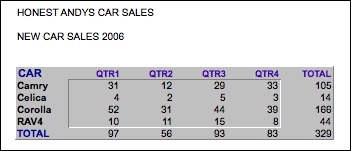
Help Features
-
Save options
-
style and table formats
-
custom styles
-
changing styles
-
spell checking
Module 2 Project
The multi-user version provides a project for students to apply their spreadsheet skills. Students are required to create an invoice/stock list system for Quantum Electronics (a stereo systems manufacturer).
| Home | Products | iPad | Downloads | Testimonials | Ordering | Contact Us |